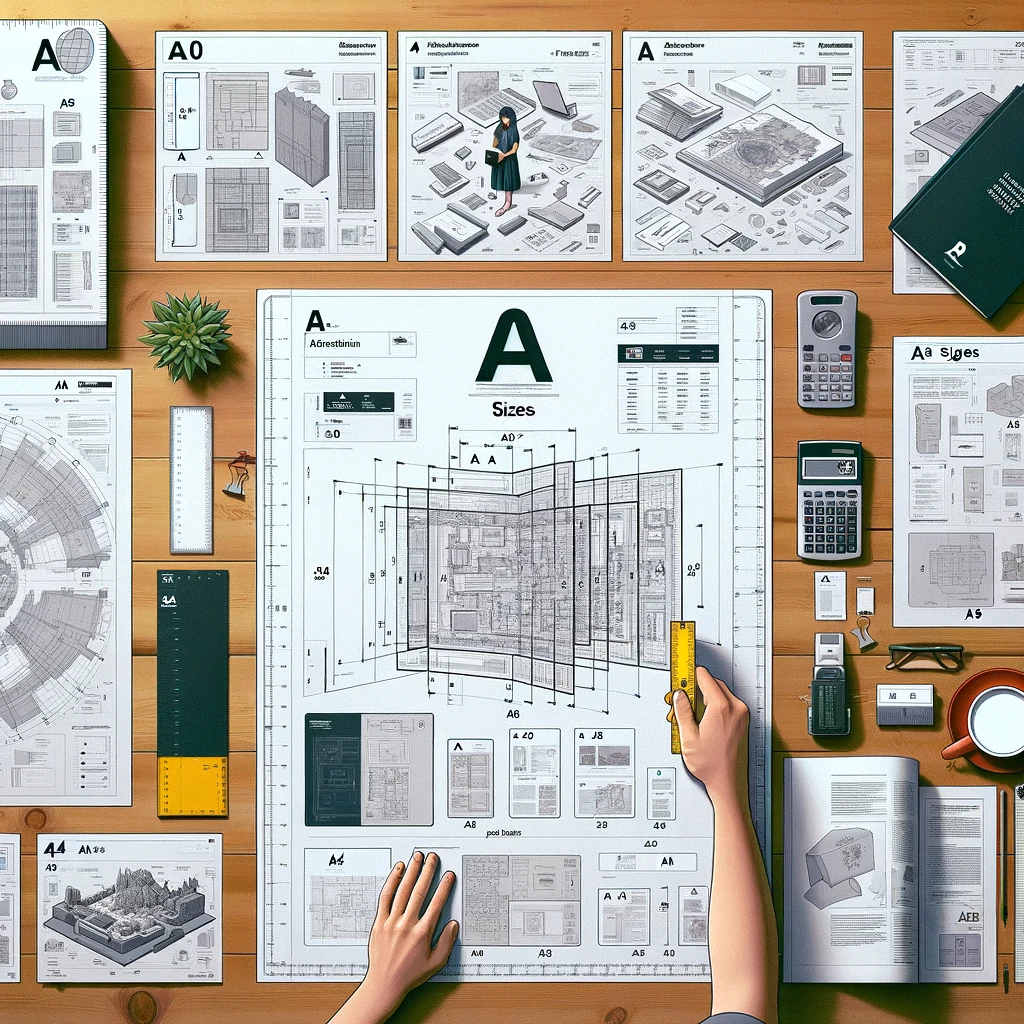Understanding the A Sizes Paper Standard is important for many businesses and industries. It’s like a key that unlocks efficiency and makes things work smoothly.
Whether you’re printing, designing, or just doing regular office tasks, the A series standard has changed the game for how we use paper.
Let’s dive into what sizes there are, how they’re used, and why they’re so great.
Origins of the A Sizes Paper Standard
The A Sizes Paper Standard finds its roots in Germany, where in the early 20th century, Dr. Georg Christoph Lichtenberg proposed a paper format system based on the square root of 2.
This system aimed to create a series of paper sizes that maintained the same aspect ratio when folded in half, ensuring easy compatibility and efficient use of resources.
Dimensions of A Sizes Paper Standard
The A Sizes Paper Standard encompasses a range of sizes, with A0 being the largest and A10 the smallest. The most commonly used sizes include:
- A0: 841 x 1189 mm
- A1: 594 x 841 mm
- A2: 420 x 594 mm
- A3: 297 x 420 mm
- A4: 210 x 297 mm
- A5: 148 x 210 mm
- A6: 105 x 148 mm
- A7: 74 x 105 mm
- A8: 52 x 74 mm
- A9: 37 x 52 mm
- A10: 26 x 37 mm
These sizes are designed to be easily scalable, making them ideal for various printing and design applications.
Applications of the A Sizes Paper Standard
The versatility of the A Sizes Paper Standard makes it indispensable across numerous industries:
Printing and Design
In the realm of printing and design, the A series standard ensures consistency and compatibility across different devices and software. Whether creating flyers, posters, or brochures, designers can seamlessly transition between various paper sizes without compromising on quality or layout.
Office Use
In office environments, the A4 size reigns supreme as the standard for documents, letters, and reports. Its dimensions strike a balance between readability and efficiency, making it ideal for everyday tasks such as printing, copying, and filing.
Education
Educational institutions also benefit from the A Sizes Paper Standard, with textbooks, worksheets, and handouts commonly formatted to A4 or A5 sizes. This uniformity streamlines the production and distribution of educational materials, facilitating a smoother learning experience for students.
Arts and Crafts
Artists and hobbyists appreciate the flexibility of the A series standard for various creative endeavours. Whether sketching on A3 paper or creating intricate greeting cards on A6, the standardized sizes offer convenience and ease of use.
Benefits of the A Sizes Paper Standard
Efficiency
By adhering to a standardized set of paper sizes, businesses and individuals can optimize their workflow and resource utilization. The consistent aspect ratio ensures that documents can be easily scaled or resized without distortion, saving time and effort in the production process.
Compatibility
The widespread adoption of the A Sizes Paper Standard means that printers, copiers, and other office equipment are designed to accommodate these sizes. This compatibility eliminates the need for custom settings or adjustments, reducing the likelihood of errors or printing mishaps.
Cost-effectiveness
Standardized paper sizes contribute to cost savings by minimizing waste and maximizing efficiency. Whether purchasing paper in bulk or printing large volumes of documents, businesses can optimize their expenses by utilizing the most appropriate size for the task at hand.
Practical Tips for Choosing the Right Paper Size
When selecting a paper size for a specific task or project, consider the following factors:
- Content: Determine the amount of content you need to accommodate, considering text, images, and other elements.
- Layout: Consider the layout and design requirements of your document, ensuring that the chosen size complements your aesthetic preferences and formatting needs.
- Functionality: Evaluate the intended use of the document and choose a size that balances readability with practicality.
- Compatibility: Ensure that the selected size is compatible with your printing or copying equipment to avoid any compatibility issues or unexpected resizing.
By carefully considering these factors, you can choose the optimal paper size to meet your needs and maximize the effectiveness of your projects.








